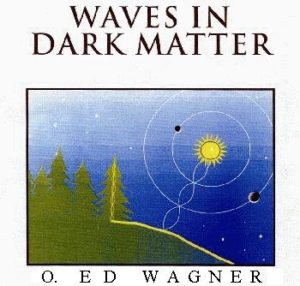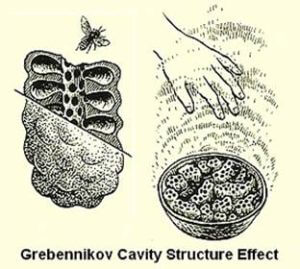 1
1

Arkaim and the texts of Rgveda about his builders
 25. 04. 2024
25. 04. 2024



 2
2
 18. 10. 2018
18. 10. 2018

How are science and technology? I just watched the movie The First Man - a movie about the life and landing of the first man on the moon, Neil Armostrong. It was not easy for me to enjoy the film because I had a lot of thoughts in my head. The idea that this is only a small truth about human exploration of the universe and that space races in the 11s also seem to have been used to suck money into covert projects. Apollo XNUMX astronauts had to record activity on the moon, but signed a silence agreement. It was an incredible feat, especially for the general population and most of NASA workers.
They made incredible technological advances at the time and had to come up with a lot of new things to solve all the problems of the round trip, including landing. What preceded it all - failures, the tragedy of Apollo 1, the pressure of society, huge investments by taxpayers in something that seemed to have no chance of success. Also, what force such an event must have had when a large part of the population, up to hundreds of millions of people, enthusiastically paid attention to how a few guys actually fly to the moon.
God, in the 60s, it's still the moon! It is still an incredible expansion of all people's awareness of what is possible and where we can go as humanity. It all writes amazing human stories. So it's personally fascinating to me what we achieved in the XNUMXs. With both Russian and American astronauts.
What drove the researchers, engineers and cosmonauts of that time, the sense of discovering and expanding the horizon of what is possible, is precisely what leads us today to the fact that what we know in general is not really everything that is here. . That there is a certain secret that carries technology for hundreds of years from the future. That we are not alone in the universe and the Moon is not as deserted as it seems.
The 20th century had a lot of potential to free people from the limitations of society as we know it. Free energy, all the costs associated with the use of technology essentially zero, more affordable space travel outside the boundaries of our solar system, and all the associated humanities issues here on Earth. Dying of people, starvation, disease, fulfillment of basic human needs for all, economic differences between countries, pollution, destruction of the planet and so on, and so on. There were a lot of scientists and researchers who discovered the amazing laws of nature and how to use them, but the application to society was not so simple.
Probably today the most associated name with alternative technology and free energy. Nikola Tesla worked at the end of the 19th century and in the first half of the 20th century and was an involuntary opponent in the so-called "war of currents" with the inventor Thomas Edison. He laid the foundation for the many technologies used today and the first wireless communication, radio. He was also interested in wireless electricity transmission, free energy and antigravity. He built a 57-meter tower on Long Island, a laboratory where he worked on the wireless distribution of electricity and supplied the whole city with this tower. He also began to be interested in joining the so-called ubiquitous energy, the energy of the universe. The basic idea of free energy or zero point energy is that there is a ubiquitous, all-generating energy stream to which it can be connected. That, in fact, the empty space between atoms, particles, molecules and planets and galaxies, which makes up some 90%, is not empty at all.
Current researchers are beginning to talk about this missing link in the equation as dark matter or dark energy. We begin to think and find out what the connection is with gravity, and what it really is, this inexplicable force acting. And Tesla was thinking about that hundreds of years ago. It seems that if he had the free resources and did not go against the interests of influential people, we could travel around our solar system for hours before World War II, have worldwide electricity coverage at no cost. Where would the technology with the development of free energy lead? We know from workers in secret transnational programs that the technologies and concepts confiscated by the secret government after Nikola's death laid the foundations for the secret space program of our military complex, which began to develop actively in the 50s. Today, of course, they are technologically much further than transport in our solar system in a matter of hours.
There is a lot of scientific work to find and a lot of scientists working on alternative sources. Let's take a look at a few of them.
1) Ed Wagner
He discovered antigravity properties in nature. The way the trees get water from the ground to the top leaves and fruits themselves, sometimes over a hundred meters high, seems incredible. An explanation for a tree higher than 10m is no longer possible. Other explanations include the enormous compressive forces and the conversion of water to a gaseous state. Antigravity theory is based on the possibility that we are not only affected by a force called gravity directed to the center of the planet, but also by an inverted force coming from the center of the planet, called levity. Wagner made an experiment by cutting a hole in a tree and noticing 20% less gravity in the area.

An illustration of the Ed Wagner book illustrating the conjunction of the sun with this natural mechanism as trees receive water into their upper parts
2) Stanley Meyer
In the XNUMXs, he was able to split a molecule of water and extract energy from it. He used it to drive his buggy. It seems incredible that we are still running on fossil fuels.
3) Viktor Grebennikov
He was an entomologist, an insect scientist. He discovered antigravity properties and this all-pervading force, ether, naturally occurring in nature. An unusual thing happened to him while studying bees. One night on the shore, he fell asleep over a huge beehive created in the ground, he had unpleasant symptoms of nausea, shaking his head, and feelings as if his weight were decreasing and increasing. Some time later, he got to study the hive, and Viktor came to the conclusion that the geometry with which the bees build their hive acts on this ubiquitous ether, which has an effect on gravity. When he put his hand over this empty beehive a month later in the lab, he felt a warm, shimmering feeling. And when he put his head over him, he felt the same way that night. He did not measure any action of factors known to us with any scientific instruments.

Illustration of the country's built hive and its constant action after a long time, empty in the laboratory of Viktor Grebennik
These are just examples of scientists dealing with unconventional research methods. Today, there are many researchers and scientists following the steps of these predecessors, and among them many amateur, rather garage scientists, who with their enthusiasm spread awareness of these ideas.
We have knowledge, we are aware of these facts. Some can bring this technology to the world, but we do not see any wider implication in society. We are dealing here with the interests of corporations that would lose their power, control and money. The question of which alternative view is going through our entire history.
One idea is that it will not go so easily through the patent office and the classic procedure of new technology. That an individual cannot expect great awards and Nobel Prizes at the moment. It is now important to raise this awareness in the wider society so that people themselves demand these alternatives. One cannot go alone against such strongly implied industrialization, we need to go more together. So let's focus on how we can contribute with our unique abilities to approach this New Age and simply do the best that our present allows.